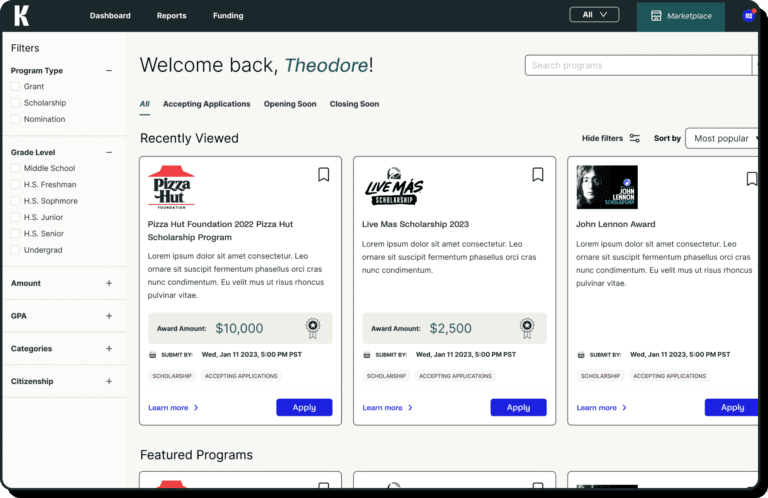Students today are more cautious, and with good reason. Fake scholarship sites and phishing scams are on the rise, eroding trust in even legitimate opportunities. The result? Students second-guess real scholarships and often skip applying out of fear or confusion.
As a provider, you might think your scholarship is trustworthy. But if your website, communication style, or application process raises even small red flags, you could be losing out on great applicants, especially first-gen or low-income students who are more vulnerable to online scams.
Here’s how to make sure your scholarship builds trust at every step, so students feel safe, supported, and excited to apply.
1. Avoid Common “Scam Signals” in Your Program Design
Even legitimate programs can mimic red flags that students are trained to avoid. Be aware of:
- Generic or outdated websites
- Broken or unprofessional links (e.g., Google Forms)
- Requests for Social Security numbers or bank details
- No clear contact info or organizational affiliation
- “Apply now!” messaging that feels like a sales pitch
Tip: Review your program materials through a student lens. Would you trust this if you’d never heard of the provider before?
2. Communicate Credibility Clearly and Early
Make it easy for students to verify that your scholarship is real and worth their time.
Checklist:
- Clear branding and affiliation (logo, sponsor name, mission)
- Public award history (e.g., number of past recipients, total dollars awarded)
- Named contact for questions (not just a generic email)
- Timeline and process transparency (e.g., review dates, selection criteria)
🔗 If hosted on a third-party platform, like Kaleidoscope, highlight that too, it adds legitimacy.
3. List Your Scholarship on Trusted Platforms
Students often search for scholarships through curated databases like:
- Fastweb
- Niche
- College Board
- UNIGO
- Kaleidoscope’s Marketplace

Getting listed on these platforms boosts visibility and credibility, since students recognize them as vetted sources.
4. Address Skepticism in Your Outreach
Today’s students are savvy and skeptical. Meet them there.
- Include direct quotes or video testimonials from past recipients
- Be upfront about what the scholarship doesn’t require (e.g., “No SSN needed”)
- Create content like “What to expect when you apply” to demystify the process
- Emphasize security, privacy, and transparency in your application materials
Example:
“We’ll never ask for sensitive info like your Social Security number. Our application only takes 15–20 minutes and is reviewed by a real panel of educators and professionals.”
5. Bonus: Educate Students on How to Spot a Scam
Go one step further, use your platform to help students protect themselves. Share tips like:
- Don’t pay to apply (Unless the justification is clear and legitimate)
- Beware of urgent or “guaranteed” offers
- Check for spelling errors and fake URLs
- Verify the scholarship on the sponsor’s main website
By helping students stay safe, you position your program as an ally, not just a funder.
Conclusion: Trust is Your First Barrier to Applications
The best scholarship in the world won’t make an impact if students are too nervous to apply. By designing for trust, using transparent language, and aligning with trusted platforms, you’ll help more students feel confident that your scholarship is the real deal and worth their time.
Want to make your scholarship stand out for all the right reasons?
Kaleidoscope helps scholarship providers build trust through secure, branded application experiences that students recognize and rely on.
➡️ See how our platform builds legitimacy and increases applications. www.mykaleidoscope.com











